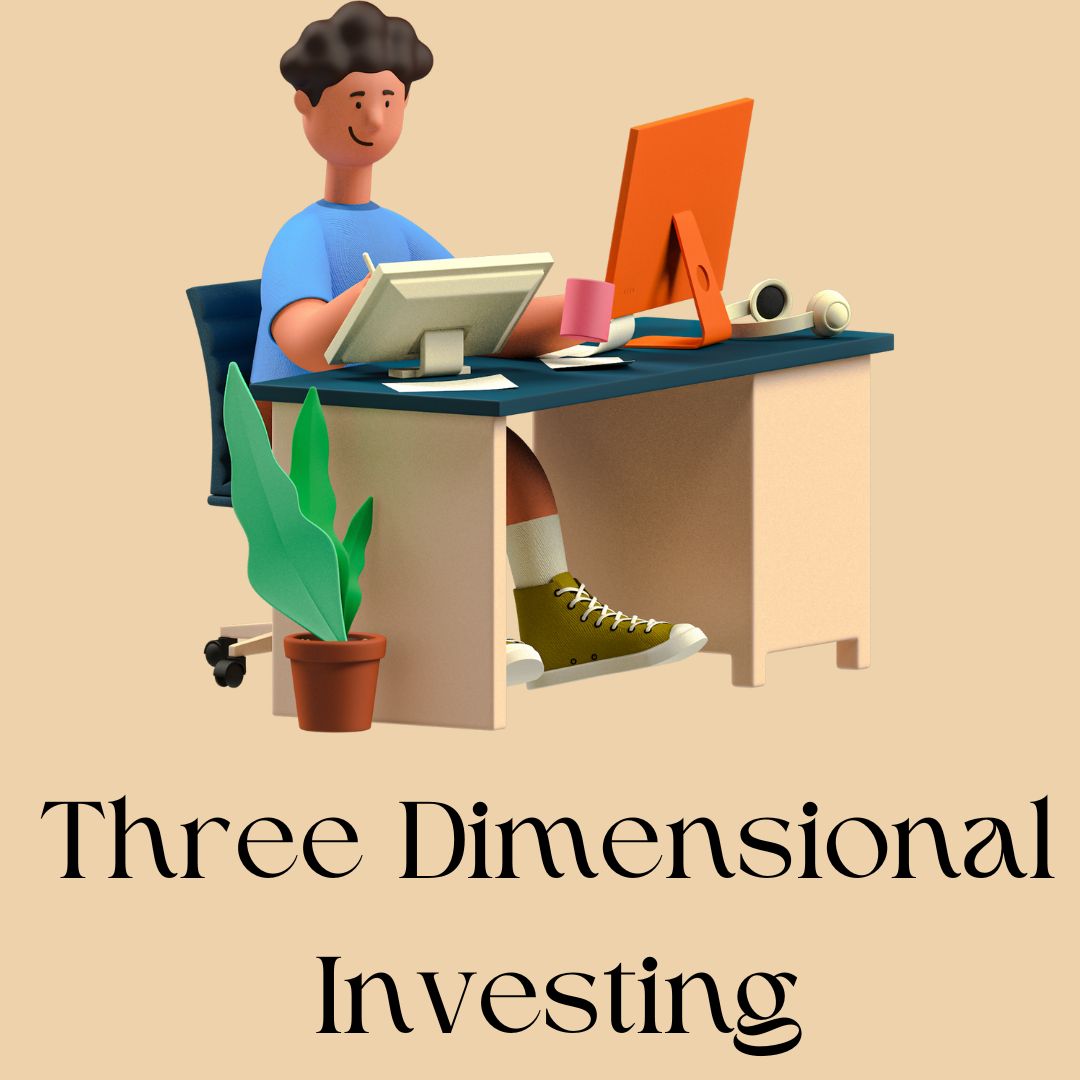Three Dimensional Investing
- 13 September 2023 | 2116 Views | By Abhinav Mishra

Spending and saving are both vital financial activities for investors. From a top level, they serve different purposes and have distinct effects on an individual’s financial well-being and goals. From a country’s economic perspective, however, they are the same. Spending and saving (to invest) form the two dimensions of investing. But the fact is, in today’s time, we also need to have a third dimension.
Two Dimensional Investing
There are two ways in which the majority of us use our income:
- Taking care of our needs and wants
- Saving and investing in different asset classes
Let me elaborate a little on the above two points.
Part 1: When you buy a Tata Motor car (taking care of your needs and, in some cases, your wants), you are helping the company by contributing to its sales. Similarly, when you go out and have your favorite Domino’s pizza, you are helping Jubilant Foods. The middle class and above, consciously or unconsciously, are spending their income and helping the companies grow directly, and the Indian economy indirectly.
Part 2: By investing in different asset classes like stocks and bonds, you create a stable financial environment and help the economy. Let us understand it with examples of stocks. When you invest in stocks, you become a company’s shareholder. You are contributing capital that they can use for expansion, research, and development. This stimulates economic growth by fostering innovation, job creation, and increased production.
Need for the Third Dimension
As per the 2022 CSE Report, 71% of Indians cannot afford a healthy diet. Do you think they will ever contribute to the Indian economy (by investing) in a meaningful way?
What can we do as individuals? We need to widen our investment horizon so they can contribute to the economy. A poor rickshaw puller or a laborer barely has enough to feed his family a meal three times a day. You may argue – we are already paying taxes, and it is the government’s responsibility to take care of them. We can debate it, but let’s not get into it today.
There is a clear and significant gap, so we must fill in some of the gaps by adding a third dimension to our investing.
Introducing the third dimension to your investing
Today, you may be investing 40% of your total salary, and the remaining would probably be spent on your needs and desires. Congratulations on it! However, you can make a small change and introduce a third dimension. Instead of saving and investing 40%, you can invest 39.5% in different asset classes and the remaining 0.5% in the third dimension.
The third dimension is investing in the lower class of India – for their upliftment, which will eventually merge with the existing two.
The change in mindset
More than a change in investing percentage, you need a change in mindset to bring a third dimension to your investing. Let me explain.
Do you think popcorn or a soft drink at a PVR is expensive? Most of us would agree to it – at least the middle class. However, have you said or heard anyone say this at the counter – ‘The prices are high. Instead of giving it for Rs 500, can you give it for Rs 400?’ We don’t do it, right?
However, in local markets, every second person is bargaining with the fruit and vegetable vendor – and eventually, they pay less than what the asking rate is.
We need to change this mindset. If you are comfortable spending Rs 500 on popcorn, you should be fine paying Rs 50 to the rickshaw puller instead of Rs 30 – even if you think he is overcharging you.
Some of you may argue that there is no point in uplifting the poor this way. They may misuse the additional money at their disposal. Here is an important point – you need to look at these transactions from an investor perspective. When you invest in 30 companies, some investments can turn bad, right? It should not stop you from making investments in the first place.
When you give money to the poor, you participate in income redistribution. By providing financial support to those with lower incomes, you contribute to reducing the wealth gap, which can lead to a more stable and prosperous country.
What will the third dimension bring to the table?
The majority of local purchases made by the poor go to small enterprises and neighbourhood markets. Small businesses are essential for the growth of the Indian economy due to their significant contributions to employment, innovation, and local economic development. A prime example of this importance can be seen in the retail sector. Local mom-and-pop stores, neighborhood boutiques, and small grocery shops are integral parts of India’s retail landscape.
These small businesses create job opportunities at the local level, absorbing a substantial portion of the workforce. For instance, a family-owned grocery store not only employs family members but also hires local residents to manage the shop, stock shelves, and assist customers.
The Multiplier Effect
The concept of the multiplier effect highlights how initial spending triggers a chain reaction of additional spending. For instance, when you give money to a poor lady selling fruits, and she purchases a product with your money, the business she buys from receives revenue, a portion of which goes to paying employees and suppliers. These employees and suppliers, in turn, spend their earnings on other goods and services, creating a continuous cycle of spending and economic activity.
If a large part of the Indian population can take the first step of helping the poor – the multiplier effect will take care of everything, so you don’t have to worry about anything after it.
Before you go
Earn, save, and invest – a simple mantra for success in the financial journey. However, plan to introduce a new dimension to your investing. I have not said it until now – but before you – introducing the third dimension to your investing is not only about ‘investing. You are doing much more as a human being. Whatever your perspective, do bring the third dimension to your investing. Read about Abhinav Mishra’s Investing Journey
From Mint2Save editorial:










